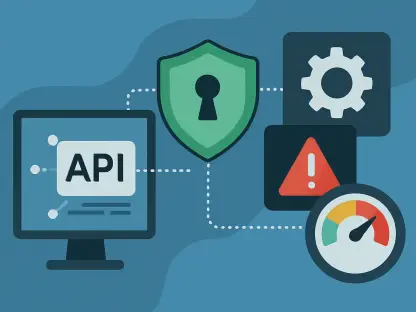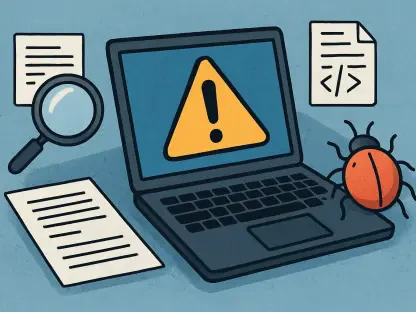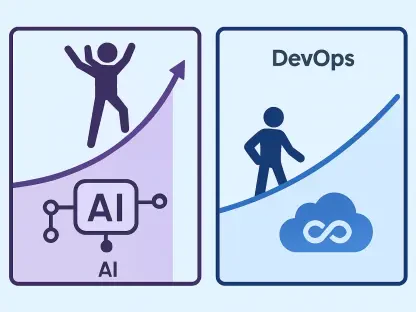In the fast-paced world of software development, consider the staggering impact of communication breakdowns: developers lose an average of six hours per week due to unclear documentation and inefficient processes, according to recent industry insights from Atlassian’s State of DevEx report. This guide aims to equip developers with the tools to transform their writing skills across critical areas like documentation, pull requests, and blog posts, ultimately fostering seamless collaboration and boosting productivity. The ability to convey ideas clearly isn’t just a nice-to-have; it’s a cornerstone of efficient teamwork and career advancement in tech.
The significance of mastering writing extends beyond mere clarity—it directly influences project timelines, team dynamics, and even personal visibility within the industry. Poor communication can derail projects, frustrate colleagues, and obscure valuable contributions, while strong writing builds trust and accelerates problem-solving. This guide provides a structured path to refine these skills, offering actionable steps tailored for developers who may not see themselves as natural writers but recognize the need to communicate effectively.
By following this roadmap, developers can expect to streamline workflows, reduce misunderstandings, and position themselves as key contributors in their teams and communities. Each section focuses on practical strategies to elevate writing in everyday scenarios, ensuring that every line of text serves a purpose. Whether debugging at midnight or pitching a code change, the principles outlined here aim to make every interaction more impactful.
Why Writing Is a Game-Changer for Developers
Writing holds a pivotal role in software development, acting as the glue that binds teams, projects, and ideas together. Beyond coding, the ability to articulate thoughts clearly through documentation, code reviews, and external content shapes how efficiently teams operate and how well challenges are resolved. It’s a skill that amplifies a developer’s influence, turning complex concepts into accessible insights for colleagues and stakeholders alike.
The impact of strong writing resonates in collaboration, where misunderstandings can cost hours or even days of rework. When developers prioritize clear communication, they pave the way for smoother handoffs, quicker onboarding, and more cohesive team efforts. This isn’t just about avoiding errors; it’s about creating a shared understanding that drives projects forward with minimal friction.
Moreover, writing serves as a catalyst for career growth, opening doors to leadership roles and industry recognition. By mastering key areas such as crafting detailed documentation, structuring compelling pull requests, and sharing knowledge through blog posts, developers can enhance their professional footprint. These skills transform routine tasks into opportunities for building trust and demonstrating expertise across internal and external networks.
The Hidden Cost of Poor Communication in Development
Ineffective communication in software development exacts a heavy toll, often measured in lost time and missed opportunities. Data from Atlassian’s latest findings reveal that developers spend significant portions of their week—up to six hours—untangling issues stemming from vague documentation or unclear instructions. This inefficiency compounds as teams grow, turning small oversights into major bottlenecks that hinder progress.
The perception of writing as a secondary skill is rapidly shifting within the industry, with many now viewing it as a core competency on par with coding. As projects become more complex and distributed across global teams, the need for precise, accessible communication becomes undeniable. Even with AI and automation tools easing some burdens, human clarity remains irreplaceable in conveying intent and context.
Beyond immediate delays, poor writing perpetuates cycles of confusion that affect morale and productivity. Misaligned expectations during code reviews or incomplete guides during critical fixes can lead to frustration and rework. Addressing this gap is not just a matter of convenience; it’s a strategic necessity to maintain competitive engineering velocity in an era where every hour counts.
Key Strategies to Elevate Developer Writing Skills
Enhancing writing skills as a developer requires deliberate focus on formats that shape daily interactions and long-term impact. The following strategies break down actionable steps to improve communication in documentation, pull requests, and blog posts, ensuring each piece of writing fosters collaboration. These approaches are designed to fit into existing workflows, making them practical for busy professionals.
Each format serves a unique purpose, yet all hinge on clarity, structure, and reader awareness. By adopting these methods, developers can reduce friction in team dynamics, save time on reviews, and contribute meaningfully to broader knowledge bases. The guidance provided here includes specific tips and tools to turn writing from a chore into a powerful ally.
Step 1: Crafting Impactful Documentation
Documentation stands as a lifeline for teams, preserving critical knowledge for current and future use, especially during high-stress scenarios like late-night debugging. The goal is to create content that answers questions before they’re asked, reducing dependency on tribal knowledge. This begins with a mindset shift toward anticipating what readers need most when they’re under pressure.
Focus on Reader-Centric Content
Prioritizing the reader’s perspective over the writer’s assumptions forms the foundation of effective documentation. Instead of assuming familiarity, introduce acronyms and technical terms with brief explanations or references. Linking to existing resources or design decisions avoids unnecessary repetition while providing a clear path to deeper context, ensuring users can navigate complex information effortlessly.
Another key aspect involves structuring content to address pain points directly. Think about the questions that arise during a crisis—why was this decision made, or how does this component interact with others? By embedding answers within the text, documentation becomes a proactive tool rather than a passive archive, saving time when it matters most.
Include Real Code Snippets
Embedding real, working code snippets transforms documentation from abstract theory into actionable guidance. These examples should reflect realistic scenarios, such as a specific API call or a configuration fix, making them directly applicable during problem-solving. This approach bridges the gap between explanation and execution, empowering readers to apply solutions immediately.
Beyond mere inclusion, ensure these snippets are annotated with concise comments explaining their purpose or potential pitfalls. This added layer of detail helps developers understand not just how to use the code, but why it works in a given context. Such precision turns documentation into a trusted resource for both novices and seasoned team members.
Leverage Tools for Consistency
Maintaining documentation quality across a project demands consistency, which can be achieved through specialized tools like Docusaurus or Swagger. These platforms automate formatting, versioning, and accessibility, ensuring that updates don’t disrupt usability. They also integrate with existing systems, streamlining the process of keeping content current.
Regular audits using such tools help identify gaps or outdated sections before they cause confusion. Automated checks for broken links or inconsistent terminology save manual effort, allowing focus on content creation rather than maintenance. This systematic approach ensures documentation remains a reliable asset over time.
Step 2: Perfecting Pull Requests as Collaborative Pitches
Pull requests (PRs) serve as a critical touchpoint for collaboration, acting as proposals that justify code changes to reviewers. A well-written PR minimizes back-and-forth, accelerates approvals, and builds trust among team members. The key lies in presenting changes as a coherent story that respects the reviewer’s time and expertise.
Structure with Precision and Purpose
A structured PR starts with a clear title that summarizes the action or intent, such as “Add rate limiting to API endpoint.” Include sections for context, scope, and testing instructions to provide a complete picture of the change. Research from GitClear indicates that such clarity can reduce review times by over 40%, highlighting the tangible benefits of this method.
Beyond the basics, ensure the description addresses why the change is necessary and how it aligns with project goals. Break down complex updates into smaller, digestible points, making it easy for reviewers to grasp the intent without wading through dense text. This structured format turns a PR into a collaborative tool rather than a hurdle.
Respect Reviewers’ Time
Respecting reviewers’ time means using action-driven language and visuals where appropriate to make PRs scannable. Phrases like “Fixed bug in authentication flow” paired with a screenshot of the error log can convey impact instantly. This approach cuts through noise, allowing reviewers to focus on code quality rather than deciphering intent.
Additionally, anticipate common questions by including details like edge cases handled or dependencies affected. Providing this upfront reduces follow-up queries, fostering a smoother review process. Such consideration not only speeds up merges but also strengthens professional rapport within the team.
Step 3: Building Visibility with Practical Blog Posts
Blog posts offer developers a platform to share knowledge with a wider audience, enhancing personal credibility while contributing to community learning. Unlike internal writing, blogs reach beyond immediate teams, positioning authors as thought leaders. The focus here is on authenticity and utility over perfection.
Address Real Problems and Solutions
Effective blog posts center on real challenges encountered in development, detailing specific issues, failed attempts, and eventual solutions. This raw, problem-solving approach resonates with readers facing similar obstacles, offering them practical takeaways. Honesty about missteps adds depth, making the content relatable and trustworthy.
Structure these posts to guide readers through the journey, starting with the problem’s context, followed by troubleshooting steps, and concluding with lessons learned. This narrative style keeps engagement high while delivering value, ensuring the post serves as a resource rather than a mere story. Impact comes from relevance, not polish.
Simplify for Community Impact
Simplicity in blog writing maximizes accessibility, using a conversational tone and working code snippets to convey ideas. Avoid overcomplicating explanations; instead, break down concepts into clear, step-by-step insights that even junior developers can follow. The goal is to democratize knowledge, making it useful to a broad audience.
Focus on actionable content by embedding examples that readers can test themselves, such as a script to resolve a common error. This hands-on element, combined with straightforward language, ensures the post isn’t just read but applied, amplifying its influence within the tech community.
Quick Recap: Core Pillars of Developer Writing
This section distills the essential strategies into a concise reference for developers seeking to enhance their communication skills. Each pillar targets a specific format with focused tips to ensure immediate applicability in daily tasks.
- Documentation: Aim for clarity in high-pressure situations by anticipating reader needs, embedding real code examples, and utilizing tools for consistent updates.
- Pull Requests: Organize PRs with clear context and actionable language to facilitate efficient reviews and strengthen team collaboration.
- Blog Posts: Share practical insights and solutions through straightforward content, building personal visibility and contributing to collective knowledge.
Writing as a Catalyst in the Broader Tech Landscape
Effective writing aligns with current industry trends emphasizing transparency and knowledge sharing among developers. As teams scale and projects grow in complexity, structured communication becomes a vital tool to address bottlenecks in engineering velocity. Clear documentation and PRs ensure alignment across distributed groups, reducing delays caused by miscommunication.
This skill also prepares developers for emerging challenges, such as integrating AI tools into workflows or onboarding new team members rapidly. Well-written content serves as a foundation for automation, enabling tools to parse and utilize information effectively. Beyond internal benefits, strong writing enhances organizational credibility through public-facing content like blogs or open-source contributions.
On a personal level, refined writing skills contribute to career progression by showcasing expertise and thought leadership. Publicly shared insights can attract opportunities, from speaking engagements to new roles, while internally, clear communication positions developers as reliable collaborators. In a landscape where technical and soft skills increasingly intersect, writing stands out as a differentiator.
Final Thoughts: Start Writing to Collaborate Better
Reflecting on the journey through this guide, developers who embrace the outlined strategies will likely find their documentation becomes a trusted resource during critical moments. Pull requests that were once a source of delay can turn into streamlined discussions, thanks to precise structuring and reviewer-focused content. Blog posts, crafted with raw honesty, connect with wider audiences, amplifying personal impact in the tech community.
Looking ahead, the next step is to start small—refining a single piece of documentation or drafting a concise pull request description proves to be a manageable entry point. Developers are encouraged to iterate on their writing just as they would on code, seeking feedback and observing how clarity reshapes team interactions. This gradual approach builds confidence over time.
The long-term payoff is evident in faster project cycles, stronger team cohesion, and expanded career horizons. Beyond immediate gains, the focus shifts to sustaining this momentum by exploring additional resources, such as style guides or community forums, to further hone communication. Writing, once seen as a secondary task, emerges as a powerful lever for success in development.









